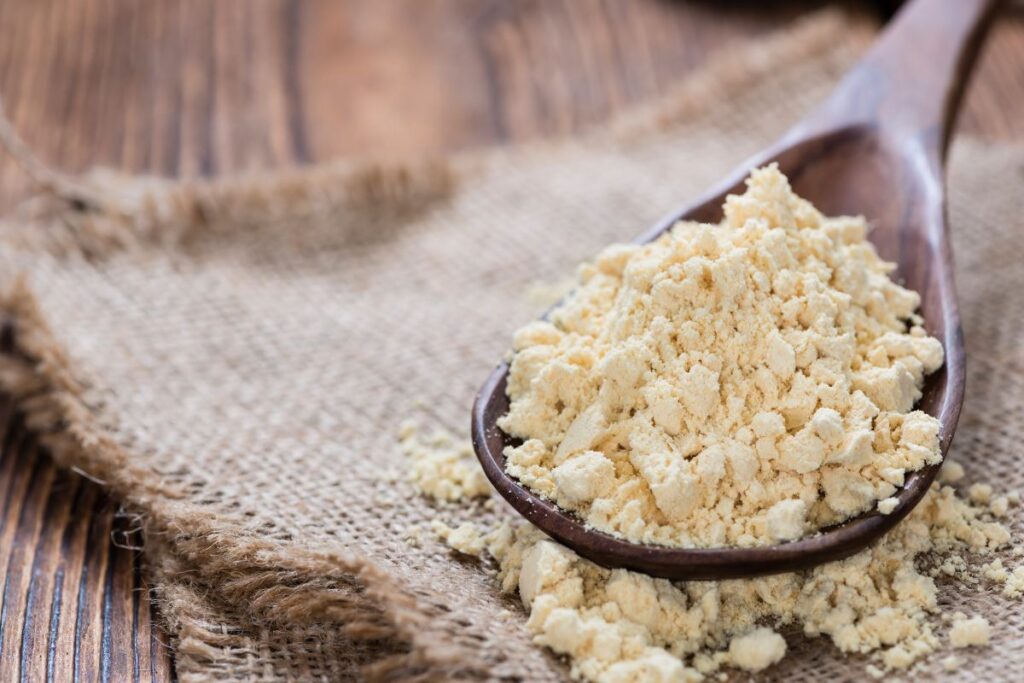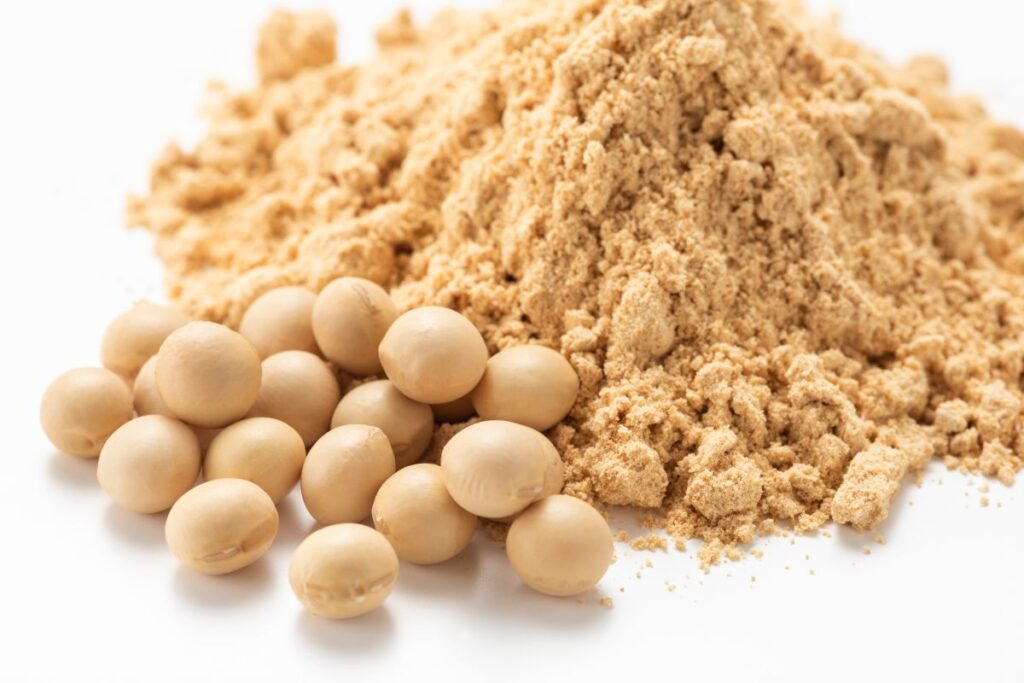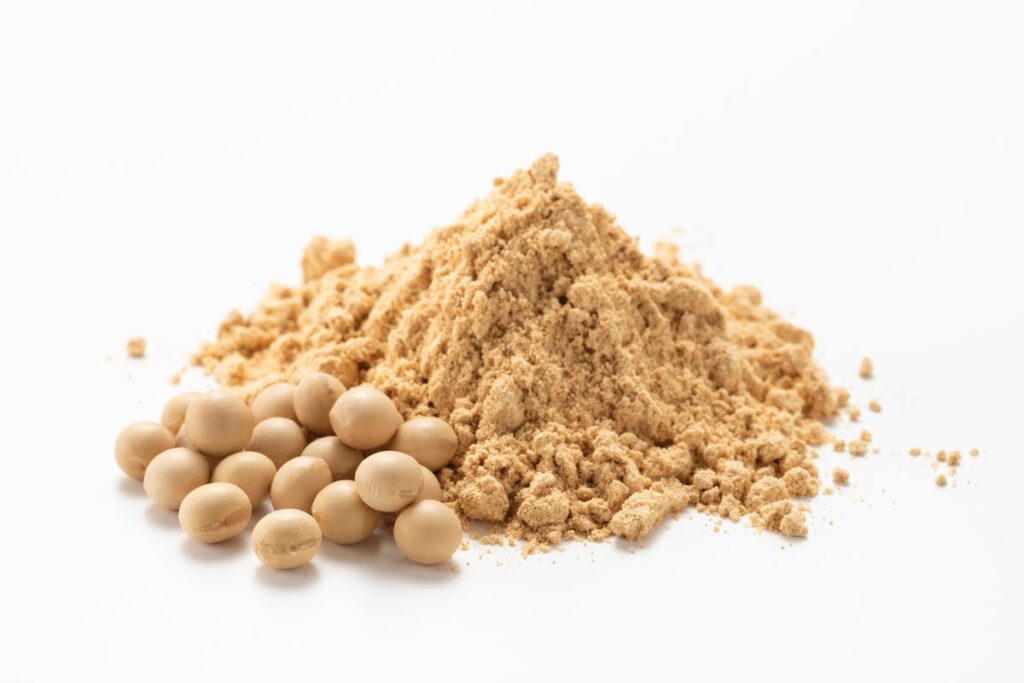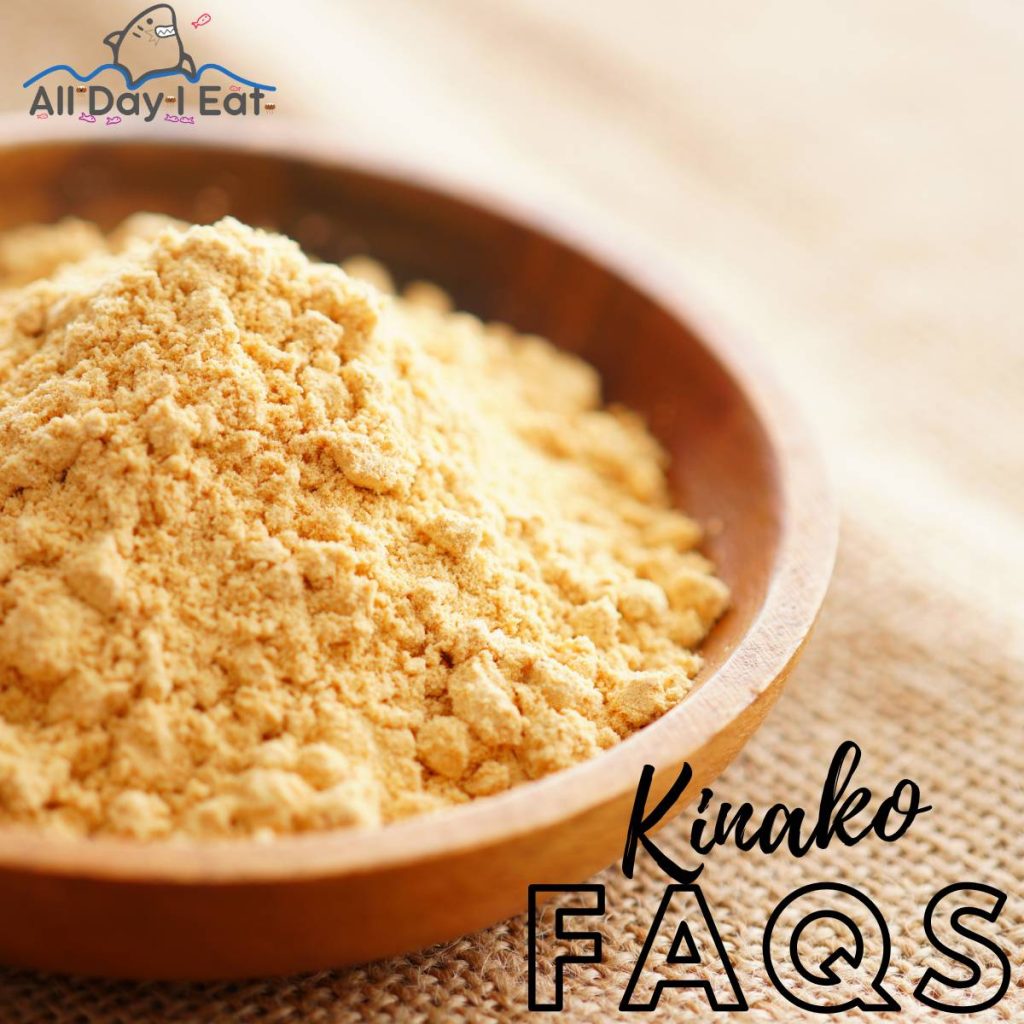Are you ready to embark on a culinary adventure that will transform your desserts into tantalizing masterpieces? Picture a secret ingredient that not only adds a delightful sweetness but also infuses your treats with a unique and irresistible flavor.
Prepare to be enchanted by the world of kinako, the roasted soy flour that has been captivating Japanese confectionery for centuries.
From its fascinating origins to its meticulous creation process and surprising health benefits, kinako is so much more than meets the eye.
Join us as we peel back the layers of tradition and innovation surrounding this magical powder, and discover why it has become a beloved companion of chefs and dessert enthusiasts worldwide.
Brace yourself for a journey that will leave your taste buds craving more and your desserts forever transformed.


The Origins of Kinako
Tracing back to ancient Japan, kinako originated as a nutritious staple in the traditional diet, offering a sweet, nutty flavor to a variety of desserts.
Kinako, with its rich protein content and essential nutrients, wasn’t just a random discovery.
It was the result of meticulous processing of soybeans, a crop deeply embedded in Japanese agriculture and cuisine.
You mightn’t realize it, but you’ve got the power to incorporate this versatile ingredient into your diet, enhancing your culinary creations with its unique taste and health benefits. You can harness the historical significance of kinako to elevate your cooking.
Imagine integrating this time-honored ingredient into modern dishes, combining tradition with innovation. Kinako’s journey from a vital source of nutrition in ancient Japan to a cherished component of contemporary cuisine is a testament to its enduring appeal.
By choosing to use kinako, you’re not just adding flavor to your meals; you’re embracing a piece of culinary history.
Take control of your diet by exploring the diverse uses of kinako. Whether it’s dusted over mochi, blended into smoothies, or incorporated into baked goods, you have the opportunity to infuse a traditional twist into everyday eats.
How Kinako Is Made
Diving into the process, you’ll find that making kinako starts with roasting soybeans until they achieve a golden brown color. This step is critical, as it directly impacts the flavor and aroma of the final product.
You’ll want to ensure that the soybeans are evenly roasted, turning them occasionally to prevent any from burning. The goal is to coax out a rich, nutty flavor that’s characteristic of high-quality kinako.
Once you’ve got the perfect roast, let the beans cool before grinding them into a fine powder. This is where you’ll exercise precision.
The fineness of the powder dictates the texture of your kinako; too coarse, and it won’t blend smoothly into recipes, too fine, and it may clump. Aim for a consistency that’s silky to the touch, yet still retains a bit of body to add depth to your desserts.
The Nutritional Profile
Interestingly, kinako isn’t just a flavorful addition to desserts; it’s also packed with a variety of nutrients that can benefit your health. This traditional Japanese ingredient offers you a unique way to enhance your dishes while taking control of your nutritional intake.
Rich in protein, kinako supports muscle maintenance and growth, making it a fantastic choice for your fitness goals. It’s also loaded with fiber, which aids in digestion and helps you feel full longer, curbing those unwanted cravings.
Moreover, kinako contains isoflavones, compounds known for their antioxidant properties. These can help protect your cells from damage, contributing to your overall well-being and helping you combat the stress of daily life.
Additionally, it’s a good source of minerals like calcium and iron, essential for bone health and energy levels, respectively.
Incorporating kinako into your diet isn’t just about indulging in the sweet side of Japanese cuisine; it’s about making a conscious choice to nourish your body with quality ingredients.
You’re not only treating your taste buds but also empowering yourself with the knowledge and means to support your health goals.
Embracing kinako in your culinary adventures allows you to take control, ensuring you’re not compromising on taste or nutrition.


Traditional Uses in Desserts
Kinako, a roasted soy flour, is a staple ingredient in many traditional Japanese desserts, offering a unique sweetness and nutty flavor.
You’ve likely encountered this versatile component if you’ve delved into the world of Japanese sweets. It’s your key to unlocking an authentic taste in your own kitchen creations.
Take mochi, for example. This chewy rice cake becomes irresistible when dusted with kinako. You’re not just adding a layer of flavor; you’re embracing tradition.
The same goes for warabi mochi, a jelly-like confection that pairs beautifully with the earthy tones of kinako, creating a balance you’ll crave.
Don’t stop there. Your culinary adventure should include experimenting with kinako in dorayaki pancakes. Imagine the synergy of sweet azuki bean paste with the roasted, nutty notes of kinako. It’s a combination that commands attention.
Embrace the control you have in blending tradition with personal taste. Use kinako to sweeten, to add depth, or to finish dishes with a flourish. It’s more than an ingredient; it’s a gateway to exploring the rich tapestry of Japanese dessert traditions.
Your creations won’t only taste authentic but will also resonate with the depth of Japanese culinary heritage.
Modern Twists With Kinako
How can you elevate your baking and cooking with a twist of tradition by incorporating kinako, the roasted soy flour known for its sweet, nutty flavor? You’ve got the power to transform ordinary recipes into extraordinary culinary experiences.
Start by experimenting with kinako in your smoothies for a protein boost that carries a unique flavor profile. You’re not just adding nutrition; you’re introducing a taste of Japanese tradition.
Take control of your dessert game by dusting kinako over ice cream or blending it into your homemade ice cream mix. The result? A sophisticated, subtly sweet treat that’ll impress anyone.
And don’t stop there. You can mix kinako into pancake or waffle batter for breakfasts that are anything but ordinary. Imagine the rich, nutty aroma filling your kitchen as you cook—a surefire way to start your day on a high note.
For a truly modern twist, incorporate kinako into your energy bars or balls. Combine it with dates, nuts, and a dash of honey for a snack that’s not just delicious but also packed with energy. You’re crafting snacks that are healthy, tasty, and loaded with personality.
This is your opportunity to redefine what traditional ingredients can do in today’s kitchen.
Conclusion
So, you’ve journeyed through the story of kinako, from its humble beginnings to its place in modern desserts. You’ve discovered how it’s crafted and the health benefits it packs.
Whether it’s dusted over traditional sweets or innovatively infused into contemporary treats, kinako adds a unique, nutty sweetness that’s hard to resist.
However, we understand that taste preferences can vary, and not everyone may be a fan of this distinct flavor. We’d love to hear your thoughts and experiences with kinako-enhanced desserts. Do you love it or loathe it? Leave a comment below and let’s know!
Now, armed with this knowledge, you’re ready to explore the delightful world of kinako-enhanced desserts. Go ahead, indulge your senses and let kinako sweeten your culinary adventures.






Konnichiwa! (Hello!) I'm Pat Tokuyama, a Japanese tofu cookbook author, who travels for music, food, and adventure. If you like Japanese tea, checkout some of the newestorganic japanese tea, matcha bowls and noren and more!
** Curious about the Plant Based Japanese Cooking Club? ** Learn more here!